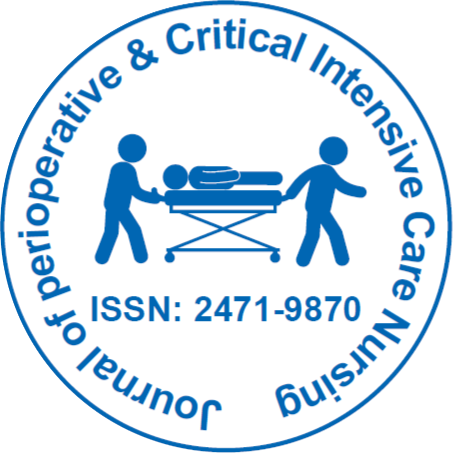
Journal of Perioperative & Critical Intensive Care Nursing
Open Access
ISSN: 2471-9870
+44-77-2385-9429

ISSN: 2471-9870
+44-77-2385-9429
Commentary - (2023)Volume 9, Issue 1
Post-Operative Urinary Retention (POUR) is a common complication that occurs after surgical procedures. It is defined as an inability to pass urine following surgery, despite the desire to do so. The condition is typically caused by a temporary dysfunction of the bladder and can be associated with significant morbidity if not addressed promptly.
Causes
POUR can be caused by a variety of factors. One of the most common is the use of anesthesia during surgery. Anesthetic agents can affect the nerves that control the bladder, leading to temporary bladder dysfunction. Additionally, the use of opioids for pain management can cause urinary retention by decreasing the sensitivity of the bladder muscles. Other factors that can contribute to POUR include the type of surgery performed, the duration of surgery, and the use of certain medications. For example, surgeries involving the lower abdomen or pelvic region, such as prostatectomy or hysterectomy, can cause POUR due to the proximity of the bladder and the surgical site. The use of medications such as anticholinergics or alpha-blockers can also contribute to bladder dysfunction.
Symptoms
The basic symptom of POUR is an urge to urinate yet an inability to do so. Patients may also experience discomfort or pain in the lower abdomen or bladder region. In severe cases, patients may develop bladder distention, which can lead to nausea, vomiting, and even sepsis.
Diagnosis
The diagnosis of POUR is typically made based on a combination of symptoms and physical examination findings. A healthcare provider may perform a bladder scan, which is a noninvasive test that measures the amount of urine in the bladder. In some cases, a catheter may be inserted into the bladder to relieve the urinary retention and measure the amount of urine in the bladder.
Treatment
The treatment of POUR depends on the severity of the condition. In mild cases, the patient may be instructed to try to urinate in a relaxed and comfortable setting, with the aid of warm water or a running tap. Patients may also be instructed to perform certain exercises, such as pelvic floor exercises, to help stimulate bladder function. In more severe cases, a catheter may be inserted into the bladder to relieve the urinary retention. This is typically done on a temporary basis until the bladder function returns to normal. In some cases, medications such as alphablockers or anticholinergics may be prescribed to help improve bladder function.
Prevention
There are several strategies that can be employed to prevent POUR. One of the most effective is to minimize the use of anaesthesia and opioids during surgery. This can be achieved through the use of regional anaesthesia techniques, such as epidurals or nerve blocks, which can minimize the need for general anaesthesia and opioids. Other strategies that can help prevent POUR include early ambulation following surgery, which can help stimulate bladder function, and the use of prophylactic medications such as alpha-blockers or anticholinergics.
Post-Operative Urinary Retention is a common complication that can occur following surgical procedures. It is typically caused by temporary bladder dysfunction, which can be related to a variety of factors including anaesthesia, opioids, and surgical site.
The condition is typically diagnosed based on a combination of symptoms and physical examination findings, and treatment depends on the severity of the condition. Prevention strategies, including minimizing the use of anaesthesia and opioids, early ambulation, and prophylactic medications, can help reduce the incidence of POUR.
Citation: Harry O (2023) Understanding Postoperative Urinary Retention: Causes, Symptoms, and Treatment. J Perioper Crit Intensive Care Nurs. 9:222
Received: 20-Feb-2023, Manuscript No. JPCIC-23-22939 ; Editor assigned: 23-Mar-2023, Pre QC No. JPCIC-23-22939 (PQ); Reviewed: 10-Mar-2023, QC No. JPCIC-23-22939 ; Revised: 17-Mar-2023, Manuscript No. JPCIC-23-22939 (R); Published: 24-Mar-2023 , DOI: 10.35248/2471-9870.23.9.212
Copyright: © 2023 Harry O. This is an open-access article distributed under the terms of the Creative Commons Attribution License, which permits unrestricted use, distribution, and reproduction in any medium, provided the original author and source are credited.